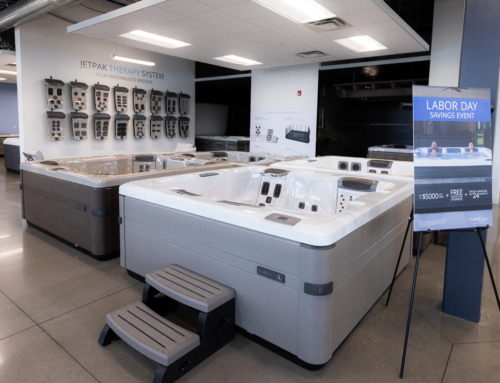Defining the Buyer’s Journey
The buyer’s journey is the process people go through from the moment they realize they have a want or need to the moment they make a purchase to serve that want or need. In the past, if the Jones family next door wanted a hot tub, they would hop in the car and drive to the local hot tub store. Once there, they would be approached by a salesperson who would immediately hit them with a sales pitch (often canned) and they would either leave the store empty handed or with a lighter checkbook and a spa delivery date. Not so anymore. These days, there are three basic stages in the buyer’s journey, some of which take place long before the customer walks into a store:
- Awareness: The buyer realizes a need/want/problem (e.g., pains and ailments, quality family time, stress).
- Consideration: The buyer evaluates the options available that meet/satisfy/solve that need/want/problem.
- Decision: The buyer reviews the information collected and decides on a specific product from a specific store.
If a customer is standing on your showroom floor, chances are they’re in the consideration stage, if not decision. But it’s helpful to be prepared to talk to any customer in any stage to avoid missing out on moving someone forward towards a sale. Let’s take a more detailed look at each of these stages.
Stage 1: Awareness
The awareness stage is about informing or educating customers about a particular need/want/problem they’re currently dealing with. This stage is about presenting context, opening a dialogue, and providing a basis for the customer to develop an opinion on their own. The needs and problems that spa retailers can address (because they have a solution for them) typically include relief, escape, and connection. Think about different blog posts you could publish, not about spas or your store, but posts that acknowledge one of these issues. Articles that relate success stories about the problem show empathy while demonstrating that it can get better.
The idea at awareness stage is to attract customers by building trust and establishing thought leadership rather than selling.
Studies show that “72% of buyers turn to Google during awareness stage research.” Most will start by searching broad knowledge categories using terms like “what is,” “how can,” and “how does,” so it’s important to tailor your content to these types of searches. The idea at this stage is to attract customers by building trust and establishing thought leadership rather than selling.
If a customer happens to come into the showroom or stops in at one of your local events “not really looking, just curious,” they can be approached as if they’re in the awareness stage. Chances are they haven’t identified their “problem,” so this is your opportunity to introduce it to them. Ask questions like:
- Have you dealt with any ongoing aches or pains?
- How would you describe your stress levels?
- How do you manage your stress?
- If there was one thing you could change about family time, what would it be?
- How often do you take time our for yourself to relax?
- How often are you active? What kind of activities do you enjoy/spend the most time doing?
- How do you help your body recover so you can do more of those activities?
Stage 2: Consideration
So now they’re aware of a problem, customers are going to explore possible solutions to that problem. If the problem is lack of family time, they may be considering taking a trip, buying a camper, or perhaps a hot tub–all of which would improve family connection.
In the consideration stage, we're still not talking about selling the hot tub there on the showroom floor, but focusing on how hot tubs in general are the better purchase over another solution.
During this stage, you want to educate customers on the ways your product (i.e., the hot tub) will satisfy their need/want/problem. Luster emphasizes the importance of listening to what the customer wants, answering their questions, and relating stories that show that this product will solve their problem. Identify and expand on the benefits unique to hot tubs and hot tub use over other products. We’re still not talking about selling the hot tub there on the showroom floor, but focusing on how hot tubs in general are the better purchase over another solution (whether it’s travel, massage therapy, chiropractor). Your focus should be on the hot tub’s functionality, return on investment, and ease of use. You can also touch on associated risks or disadvantages of other product categories that hot tubs don’t present (e.g., travel is great, but it’s hard to get the same sense of connection once the experience is over).
Here are some discussion points you want to focus on in the consideration stage:
- Why are you considering a hot tub?
- Which alternatives have you tried or been considering?
- How do you measure the risk?
- What factors does the purchase decision hinge on?
- How do you define value (in terms of personal return on investment)?
Here’s a stage two scenario:
Allen has done his research and enters the local spa dealership prepared to consider different options. He is greeted by Sally Sales who asks, “What brings you to our store today?”
Allen: “I sit at a desk all day and have some neck and back issues. I’ve used the spa at my gym and it’s been really helpful, but having one at my house would be even better. But I’m not sure it’s worth it since I already go in for a massage regularly.”
Sally Sales: “Both can definitely help you with muscle relaxation and stress relief. How often are you able to get in for a massage?”
Allen: “Usually once a week; sometimes every other depending on my schedule.”
Sally Sales: “Finding time to take care of ourselves can be such a challenge. One of the reasons owning a spa works well for therapeutic relief is the convenience it offers. Living in your backyard, you can use it anytime, any day of the week. And you only need 15 minutes to realize the benefits of the jet’s targeted massage given.”
Allen: “It would be nice not to have to wait one to two weeks for my back to feel better.”
Sally Sales: “I had a customer come in last week who told me she doesn’t even go to the masseuse anymore because her back issues have improved so drastically since owning a spa.”
Then she hands Allen a fact sheet on the stress relieving aspects of home spas.
In this scenario, Sally Sales determines why her customer wants the product, what they expect from it, and shows him that the hot tub product can and does meet his specific need. This is how you ensure your product makes it to the final stage in the customer journey.
Stage 3: Decision
The final stage, decision, is when the you’ll explain why the customer should ultimately select your brand/product. During this stage, customers weigh the pros and cons of different brands/products and dealers. Determine why they want the product, what they expect from it, and show them how the features available with your product provide a specific solution to their particular problem or how those features meet their want/need. In other words, this is (finally) the stage where you start selling your product, making sure your pitch is solution-based rather than sales-based and that you connect to the customer based on their needs.
In addition to product benefits, your presentation can include:
- Product delivery specifications
- Customer support availability
- Warranty information
- Financing opportunities
Lead the customer through the decision-making process by explaining what makes your brand/product better than others on the market. Then seal the deal by letting them try the spa out. Again, the key to this stage is to personalize your sales strategy by tailoring it to the buyer need. If the customer is looking to improve arthritis symptoms, invite him to come in seven days in a row to see if the spa reduces the symptoms with regular use.
The questions to ask here are:
- What other spas are you looking at?
- How far are you in the process?
- What do I have to offer to be considered at all now?
- What are your exclusion criteria and/or minimum requirements
- What information do you need from us to consider our spas?
Let’s look at one final scenario:
Tod and Janet are ready to make a purchase and have narrowed it down to two brands from different dealers. They are back in your store for one more look before making a decision. Sam Salesman greets them on the floor.
Sam: “Welcome back! How can I help you today?”
Tod: “We want to take one more look at the spa you showed us last week.”
Sam: “Great. Sounds like you’ve narrowed down your options. Are there any specific concerns I can clear up for you?”
Janet: “Actually, we’re considering another brand too and we want to compare the types of jets available with it as opposed to your brand.”
Sam: “Absolutely. What’s your criteria? Tell me what you want from your jets and what the other spa offers and I’ll explain how ours compares. Is there anything else you like about the other spa compared to our spa?”
Tod: “It’s really just down to the jet choices.”
Sam: “Then let me give you demo on how ours works so you can see the difference for yourself.”
Sam’s solution-based sales pitch allows him to connect to his customers based on their needs which helps him lead them through the decision-making process.
Closing the Deal
Guiding buyers from awareness to consideration to decision and then to closing the deal is accomplished by aligning your sales process with the buyer’s journey and by customizing your content to the different types of buyers and the journey itself. Whether through webpage content, advertising, or in-store visits, process/journey alignment allows you to focus on helping customers explore available options and succeed in solving their problem or meeting their need.
Harvard Business Review says that “to effectively target customers, you need to know what they’re doing before, during, and after their interactions with you.” That means being alert and involved in every stage of the buyer’s journey in three specific ways:
- Become the customers’ trusted advisor and educator
- Position yourself as your industry’s gold standard
- Build sales relationships and train sales teams
Hopefully, by the end of their journey the buyer has enough knowledge about your product/brand to trust that you have the solution to their need or problem. One way that Swim Things builds trust and stays present during every stage of the buyer journey is by having the same person who sells the spa deliver and install it as well. When sales staff is actively involved in each stage of the journey, you’ll find yourself in the winner’s circle with the grand prize package: a closed deal, a satisfied buyer and a repeat customer!









Leave A Comment